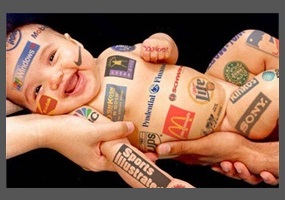Should The Way The Media Influences The Youth Be Considered A Societal Health Problem?

The portrayal of a common day in the life of an American youth is filled with the following: A radio blaring mindless, sex-charged lyrics from the latest pop artist playing in the background, television flicking image after image of glorified images of promiscuous sex, binge drinking, and violent behavior, a laptop with multiple browsers open that enable marketing companies to focus on behavior targeting, and a cell phone in hand, which also allows for instant media at your fingertips. With the rise and power of technology, problems are now more commonplace than ever. Today’s generation of adolescence faces far more negative conditions towards their mind, body, and soul due to the bombardment of advertisements. The use of social media and technology has become second nature to our country’s youth. Due to the countless issues of overexposure of media on their impressionable minds, today’s generation of adolescents face far more negative conditions towards their mind, body, and soul due to the bombardment of advertisements that causes age compression, health issues, branding, and influences on values and perspectives of reality.
Companies and marketers realize that they need to reach their potential consumers at an early age. The term “cradle-to-grave” was coined for this very concept of sending product messages from birth to death of the consumers. There is no better way to attain large sums of money than to get clients hooked on products at an early age. In the documentary Consuming Kids: The Commercialization of Childhood (2008) the narrator speaks about this “cradle-to-grave” term; the narrator argues that this strategy is not trying to sell them [children] products, but term them into life-long consumers. Many people may argue that it is the parents’ responsibility to monitor the media exposure of their children as well as control what is being bought for their children. But advertising is all around us, and children are exposed to it not only in their homes, but also in the stores they go to, and even at school.
Because of the presence of such advertising, it should be a society concern, not just a parental one. The youth is often considered a country’s “future” and if the media is teaching them to have self-indulgent and reckless attitudes, then that leaves our nation in the hands of egocentric and greedy people. Many activists for regulation on advertisements targeting children have become very passionate about the effects of media influence on the American culture. Advertising promotes a dissociative state, which exploits vulnerabilities that can lead to addictions. While it is true that advertisements do not make you addicted to alcohol or cigarettes, the commercial realism of the images appeals to people as a normalcy—creating feelings of acceptance. Therefore, the behaviors that these advertisements are promoting may shape a“toxic society”.
Advertisements go beyond trying to sell a specific product; marketers are also trying to gain loyalty from children. To win them [children] over, marketers place brands in every part of their target consumer’s lives, which is known as “branding.” Not only can someone watch characters on a television series, but now they can wear them, sleep on them, and even eat them. The youth marketers are exploiting the vulnerabilities of these children by creating attachments to their products. The youth marketers take these characters that children love and begin producing objects that children will want to consume. In effect, marketers have just caused a very powerful attachment that is making corporations and business millions of dollars. Advertisements also become deceptive, which we refer to as “product placement,” specifically in children’s programs, which is very dangerous because it plants messages of product ‘empowerment’. It seems that “branding” is teaching children that what they buy, wear, own, and eat creates their identity asserts that children see brands as an indicator that they are someone important. The youth makes the correlation that you are what you own. This type of thinking causes anxiety, depression, and low self-esteem for children and preteens. The rise of depression, hypertension, and anxiety occurs in eight million children, and the source of the cause is overexposure to a world coded in fallacy. While undermining the types of values that papers are trying to instill in their youngsters. Advertisements are teaching self-indulgence, gratification, shallowness, and egocentric behavior—those are traits far from what most parents probably have in mind.
Furthermore, America’s youth’s perspectives on values, reality, and self-image are skewed due to the imagery and contextual words that are found in advertisements. Child psychologists have recognized that more and more children have listed “being rich” as an aspiration for their adult life so that they can buy lavish objects, implying that for them, life is all about owning the most expensive and current products. Also, the issue of age compression and tweens are on the rise. This simply means that marketers take advantage of children’s urgency to be “older” by marketing them with mature related products and messages. A perfect example of age compression is the “tweens”. Tweens are those between the age of childhood and adolescence who are consuming mature clothing and make-up or sexual and violent themed products.
One of the biggest issues of age compression is that the content of what adolescents see and hear is telling them what it means to be or act as a man or woman. Clearly, teaching children to live by codes of gender will not fix the problems that women face in our society. Girls are being taught that they can only reach empowerment through beauty and with the help of a man. Boys are being taught that they should not talk about their problems or emotions, but act ‘tough’ and always be in control—promoting irritation and violent behavior. Many would argue that this is the parents’ issue and that they are at fault for their children’s behaviors. Although the parents, siblings, and peers have a big impact on shaping the individual, the biggest influences come from the media.
In the article by Susan R. Stern, she elaborates on the Cultivation Theory (which is a theory that examined the long-term effects of television on audiences of all ages). The degree of physical dissatisfaction in girls is alarming and it only increases as they age into adulthood. Stern’s study showed that more than half of girls the age of 13 and three-quarters of the age of 17 are unhappy with their bodies and all of those girls were heavy viewers of television. Beauty is shaped from years of exposure to media and from learning about beauty as it appears in American society. The constant ads of dieting and grotesquely thin models do not ease the burden of unhappiness of one’s physical appearance. Girls obsess over their clothes, hair, and make-up, and now it is their weight that they are primarily concerned with. They see celebrities being ridiculed for their own weight in magazines and begin an obsession with their own appearance.
It is clear that media has a great impact on individuals and our society. This should be considered a societal health problem. The problems that arise from the material that is being exposed to the youth suggest a need to be accepted from peers and what society is saying is normal. Also, children and teens are becoming obsessed with image, resulting in low self-esteem, anger, depression, anxiety, hypertension, and eating disorders, which, ultimately, stem from the overexposure to media. And this is a generation of advent fans of using multiple sources of media at a time. The multi-tasking with media leaves them more vulnerable to media exposure and more prone to development health problems. Therefore, these concerns should not be left to the parents alone to face, but needs to be a battle of society against marketing machines.
Image via debate.org






